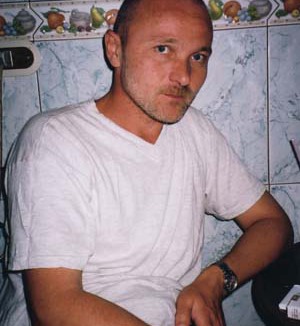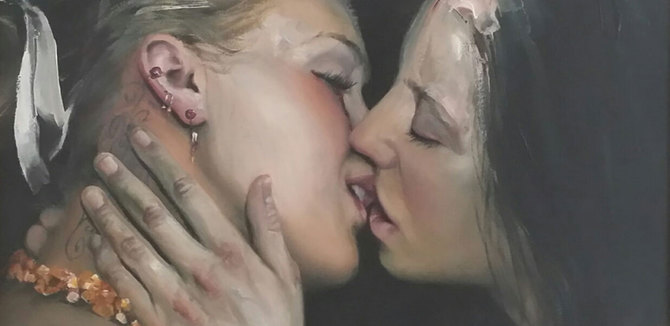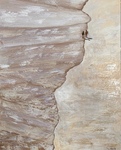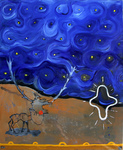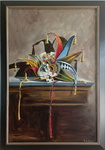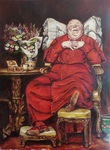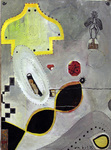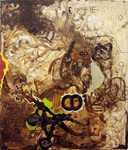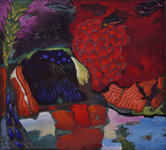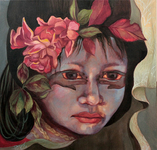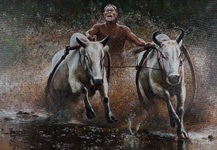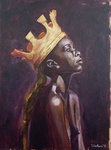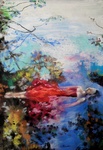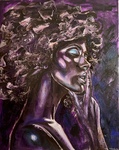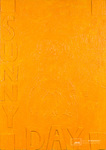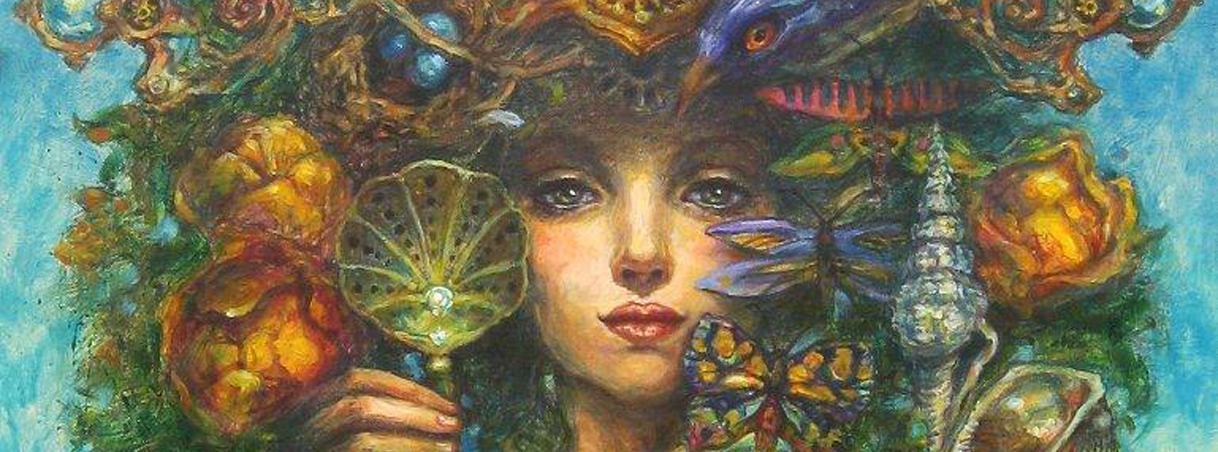
Robert Bielik (1963)
Robert Bielik
SlovenskoBiographical information
Robert Bielik patrí k tým predstaviteľom súčasnej výtvarnej scény, ktorej hlavnou motiváciou je obnova chápania pojmu závesného obrazu v jeho tradičnom slova zmysle. Úcta k výpovedným mohutnostiam obrazu ako priehľadu do imaginárneho priestoru deja, príbehu, narácie sa v Bielikovej tvorbe zhodnocuje až manieristickou inklináciou k staromajstrovským technikám. Diela vynikajú výraznými kontrastmi. Idylická, mysteriózna krajina je narušená dramatickými prvkami symbolizujúcimi civilný svet. Sú odrazom metafyzickej vízie krajiny, kde sa prelína reálne s ireálnym, väčšinou mysterióznymi krajinami, tvoriacimi scénu pre záhadné, niekedy až absurdné príbehy „divadla sveta“. Narodil sa 15. 9. 1963 v Leviciach. 1978-82 študoval na Strednej škole umeleckého priemyslu v Bratislave. 1987-93 na Vysokej škole výtvarných umení v Bratislave (prof. Rudolf Sikora). Samostatne vystavoval v Bratislave (1995, 1998, 2001, 2002, 2005, 2006), Varšave (2004). Vydal básnické zbierky: Splny na inom nebi (1991), Rehoľa márnomyseľných bratov (1992), Prenášanie grálu (1996), Mandragora (1997), Mesačný brat (1999), Vlčí ruženec (2003) a knihy próz: Ukrižuj sa (1996), Gompa - Kláštorný denník (2000).
Evaluation of creation
Robert Bielik (1963) is a fascinating example of resilient individualism on the Slovak art scene. He was discovering his personal artistic direction at a time when painting was marginalized, surviving on the edges of “high” art and art theory, viewed as an obsolete, inflexible medium that did not merit consideration equal to that of other forms in the art discourse of the time. In addition, choosing at the beginning of his creative life to adopt historical Romanticism as his mode of expression resulted in the natural transfer of the role of “romantic outsider” from Bielik’s chosen medium to himself, or rather, to several different, externally perceived artistic personae. At a time when video art and post-conceptual movements reigned, he persistently worked with oils, devoting himself to figurative motifs, without deliberate avoidance of sentiment and imagination, painting with precision in the realist style. For Bielik, this was, and remains, an authentic and believable strategy, despite the times in which his approach to paintings originated. Thanks to his steadfast dedication to his artistic path throughout the years, his constancy in his means of expression, and his honing of old-master techniques, Bielik was at last “re-discovered” as a painter, offering a serious alternative to “up-to-date” trends in painting. Currently, he is gradually taking a lead among painters who have been returning to the means of expression and technical approaches of historical painting. However, Bielik seems unperturbed by this new station, and continues to follow his unique, established path. Visual inspirations evidently come first from the very core of his personality, where religious and philosophical motifs intertwine, then from allusions to historical topics and finally from personal fascinations and frustrations. This artist’s paintings literally absorb viewers through a nerve-wracking baroque pathos, illuminating the eternal vanity of human existence, and then - returning them to their current reality via a tiny, little detail (the modern clothing of the characters, a box of cigarettes, or an airplane on the horizon), however, perhaps, to a reality maybe just slightly different from the one they have previously known.



